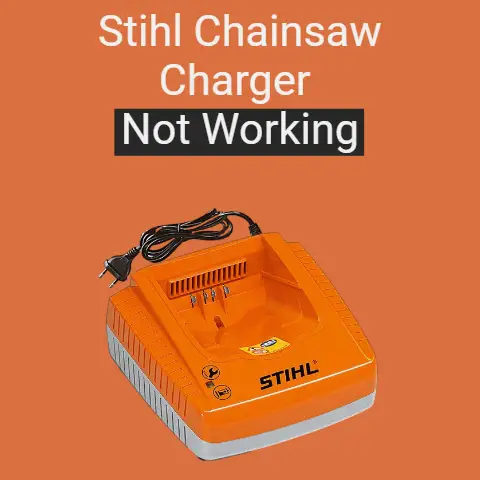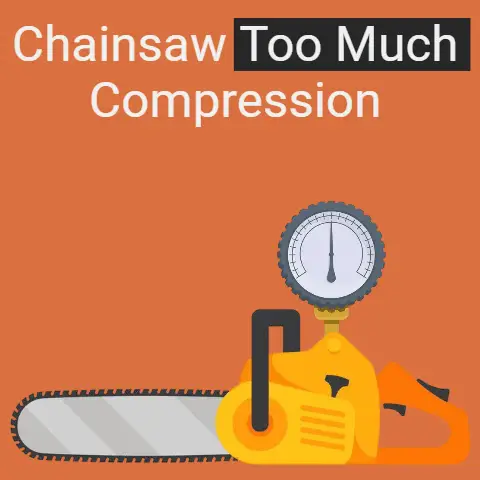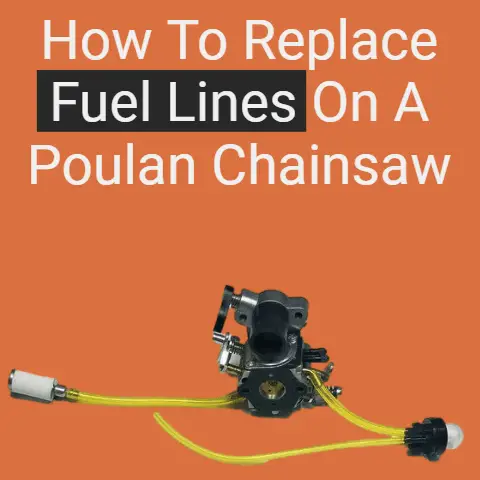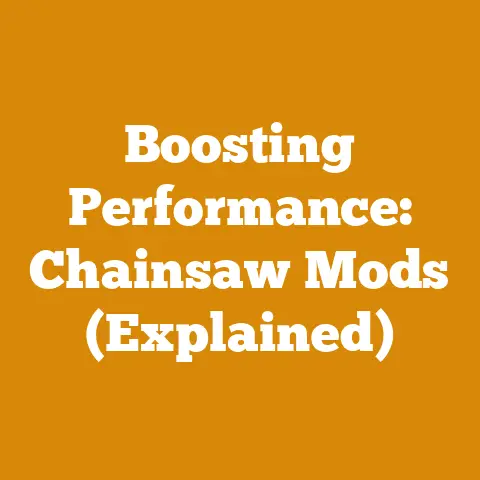How To Unseize A Chainsaw? (Explained)
A chainsaw is a fascinating tool for cutting wood logs.
Homesteaders and professionals frequently working with a saw may experience unseizing of a chainsaw.
A chainsaw is seized as it fails to crank after repeated pulls of its starter chord.
It is typical that the chainsaws get subjected and undergo wear considerably.

What is a chainsaw seizing up?
A chainsaw seizing up may be due to some fault in the assembly of the pull-chord or the piston-cylinder mechanism failure.
Generally, in most engine seizures, if the damage is not much, it is repairable.
But, if the damage reaches the engine components, the chainsaw becomes inoperable.
The factors may be revving at WOT, overheating, dust exposure, and improper fuel mix, elevating the risk resulting in engine seizures.
What Causes a Chainsaw to Seize and how to unseize?
A chainsaw is a tool that is highly useful when it is used correctly. It also needs regular maintenance if you are using it frequently.
However, with regular use, any tool or device is sure to experience wear, and the risk factors here with a chainsaw, causing seize are the following:
Incorrect Fuel Mix
It is necessary to ensure the fuel-to-oil ratio is at 50:1.
Bear in mind the pistons in the chainsaw slide from top to bottom, when in action that is per minute nearly 6000-12000 times.
You may realize the components wear at such high temperatures and speeds that it endures.
Thus, adding a lubricant is a must mixed with the fuel so that it prevents the ring and piston failure, while it reduces friction, and averts overheating.
Thus, it is right to maintain the correct ratio of fuel to oil and to unseize a chainsaw.
Revving when cold
Starting the chainsaw cold that is to avoid running at WOT.
Avoiding when it is cold is the best because the sudden cranking of the engine RPMs elevates the temperature.
It damages the engine’s rings and gaskets.
In the winter, starting the saw at a slower RPM is the best and increases the speed gradually.
Only then, you can avoid chainsaw seizing.
Running Lean
Running lean is the time, the air-fuel mixture has a higher amount of air.
It means running the engine lean causes the rise in the component’s maximum temperature, resulting in overheating.
A lean run is a result of the ethanol blend fuel that creates oxygen, and the mixture makes it lean.
Thus to unseize a chainsaw, it is best to use ethanol-free fuel and to ensure the carburetor runs rich keeping the engine cool.
Overheating
Overheating a chainsaw wreck the tool’s functioning. It harms the clutch, chain, and guide bar.
It sometimes melts the plastic case affecting the components of the engine.
It evaporates the bar oil, causing chain damage and overheating.
To avoid unseizing a chainsaw, you should ensure no clogging of the cooling system with debris, and the air should flow unrestricted through the cylinder.
Secondly, do not operate at full throttle the saw when it gets stuck as it may lead to overheating.
Remember, any load increase will result in piston failure.
How to understand if the chainsaw is seized?
When the chainsaw does not start even after pulling the chord multiple time, it is a position where the chainsaw is seized.
A chainsaw seizure is a problem caused by the engine or with the mechanism of the flywheel-pull cord.
Anytime you need to start an engine or the chainsaw, there is the need for three major agents to function properly.
They are the spark, compression, and adequate fuel supply.
Single-factor unavailability from the three major agents is enough to stop the chainsaw from functioning.
It will seize the chainsaw from operating.
The arrangement of the piston reaches the cylinder top dead center as compression.
The air-fuel mixture raises the pressure and temperature when squeezed.
While the compression-taking is placed, the volatile fuel mixture is ignited by the spark plug to start the process of combustion, thereby it forces downwards the piston.
Thus, the crankshaft receives the power supply.
During a seizure event, the breakdown of the key components hinders the compression of the engine.
It may be a faulty flywheel or a faulty pull chord.
Thus, it gets into the worst scenario such that the cylinder is jammed or the crankshaft is damaged which is known as the engine seizure.
Fixing a Seized Chainsaw, is it possible
A seized chainsaw is repairable if the components of the engine are safe largely.
It is because the problem is with the flywheel or the pull a chord mechanism.
A chainsaw may have trouble starting due to various reasons.
It can be as silly as an empty fuel tank or as crucial as clogging the filters.
A chainsaw that is locked is the stage where the pull cord never engages the flywheel.
The problem is with the piston cylinders of the engine or the flywheel system pull cord.
The former may require the attention of a skilled professional and the latter is simple for you to repair or consider troubleshooting as DIY.
In the former, where the piston cylinders are an issue, there is a possibility that the chainsaw becomes inoperable.
Trying to fix a seized chainsaw or unseizing a chainsaw means pouring some oil in the plughole.
It requires waiting for the oil to free it up and may take a few days.
It is a simple solution for the seized chainsaws to unseize after it is sitting for an extended period on the outside.
Wrapping Up
Fixing a chainsaw that is seized or unseizing a chainsaw means it is a chainsaw that fails to spin.
The simplest and easy fix is to lose the nuts retaining the bar and to rotate the tensioning screw to the correct tension counterclockwise.
There is a possibility that the method you try fails to unseize a chainsaw. If so, you may open the entire engine and diagnose the problem.
However, if you do not have much experience, ask professional seeking assistance and a solution.






